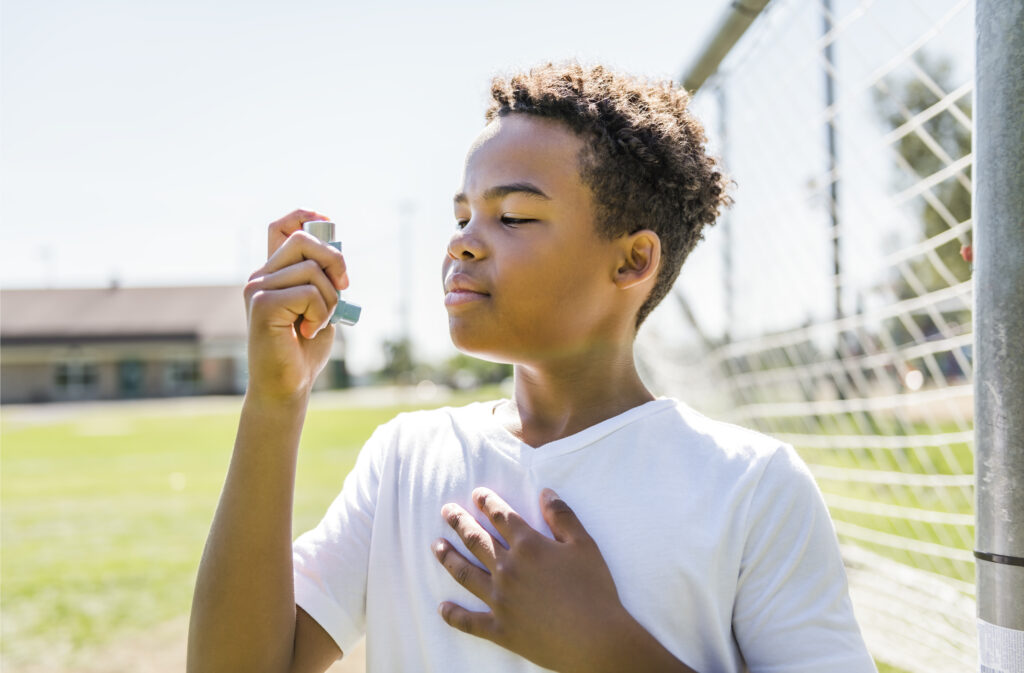9 Common Asthma Triggers in Children—And How to Manage Them

Asthma is the most common chronic condition among children worldwide. In the U.S., about one in ten children lives with asthma. While there’s no cure, asthma can be managed with the right strategies—and knowing what causes flare-ups is key:
1. Viral Respiratory Infections
Colds and other viral infections are one of the most frequent asthma triggers. Rhinovirus (the common cold), RSV, the flu, and parainfluenza viruses can all spark asthma symptoms. When asthma flares due to a virus, symptoms often become harder to control and may lead to ER visits or hospital stays.
What to do: If your child has asthma and comes down with a cold, monitor their symptoms closely. Watch for increased coughing, wheezing, or shortness of breath. If they need their rescue inhaler (albuterol) more often, contact their CPCMG pediatrician.
2. Tobacco Smoke and Air Pollutants
Tobacco smoke is particularly harmful to children with asthma. Exposure—whether firsthand, secondhand, or even thirdhand—can irritate the lungs and trigger symptoms. Other lung irritants, such as smog, cleaning chemicals, and strong fragrances, can also cause flare-ups.
What to do: Avoid exposing your child to smoke and other pollutants. Use fragrance-free cleaning products, ensure good indoor ventilation, and keep your home smoke-free.
3. Indoor Allergens
Common household allergens such as dust mites, pet dander, cockroaches, and mold can contribute to year-round asthma symptoms, especially for children who also have allergies.
What to do: Minimize exposure by using allergen-proof bedding, washing sheets weekly in hot water, and using a dehumidifier to reduce mold. Regular cleaning and pest control can also help.
4. Outdoor Allergens
Pollen from trees, grasses, and weeds can trigger asthma—especially during specific seasons.
What to do: Limit outdoor activity during high pollen seasons. Encourage your child to shower and change clothes after playing outside. Keep windows closed on high-pollen days to reduce exposure indoors.
5. Pets with Fur or Feathers
Pets such as cats, dogs, rabbits, and rodents can trigger asthma symptoms through their dander, saliva, and even urine.
What to do: If your child is allergic, avoiding the pet is usually best. Clean thoroughly if a pet previously lived in the home. Using a HEPA air filter can also reduce allergens in the air.
6. Cold Air and Weather Changes
Cold, dry air and sudden changes in temperature can irritate airways and trigger asthma. Even air conditioning can cause issues for some children.
What to do: If your child’s asthma seems tied to weather, talk with their doctor about adjusting their treatment plan during colder months or sudden weather shifts.
7. Exercise
Exercise-induced asthma is common and can cause symptoms like coughing, wheezing, or chest tightness during or after physical activity.
What to do: Your pediatrician may recommend giving albuterol 20 to 30 minutes before exercise to prevent symptoms. If flare-ups are frequent, a medication adjustment might be needed.
8. Insect Stings
For children who are allergic, insect stings—especially from bees, wasps, hornets, or fire ants—can cause severe asthma reactions quickly.
What to do: Seek immediate medical help after a sting if asthma symptoms occur. Your child may need medications like epinephrine or antihistamines. An allergist can evaluate whether your child needs additional protection.
9. Stress and Emotional Triggers
Stress, anxiety, or emotional upheaval can increase inflammation in the body and contribute to asthma flare-ups.
What to do: If you suspect stress is affecting your child’s asthma, talk to your CPCMG pediatrician. Emotional support, therapy, and coping strategies can make a big difference.
If you’re unsure what’s triggering your child’s asthma—or how best to manage it—don’t hesitate to consult your CPCMG pediatrician. With the right plan, your child can thrive despite asthma.

